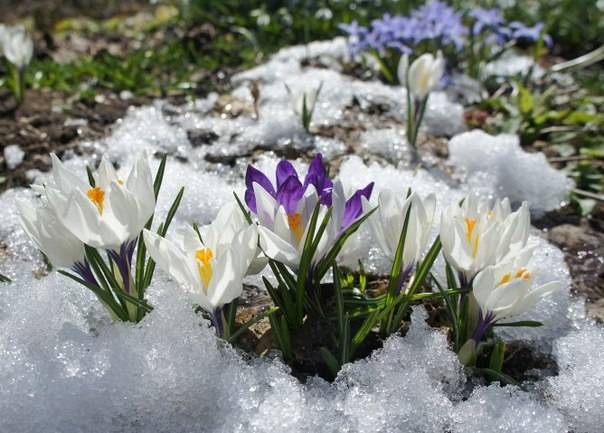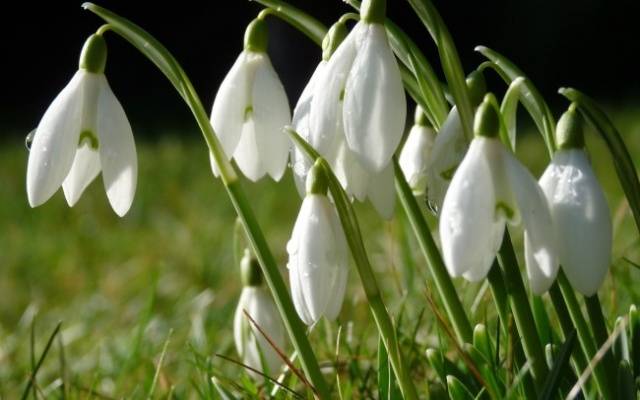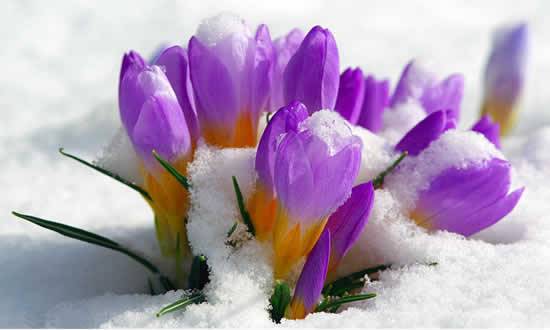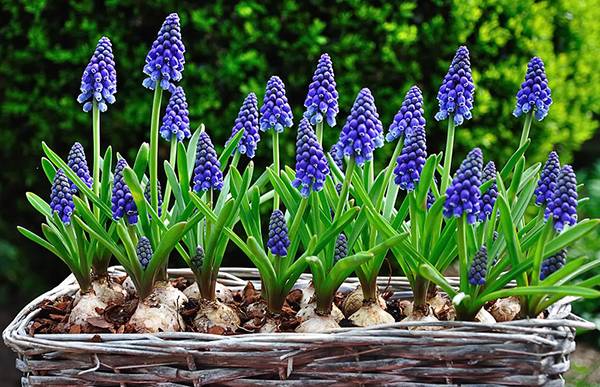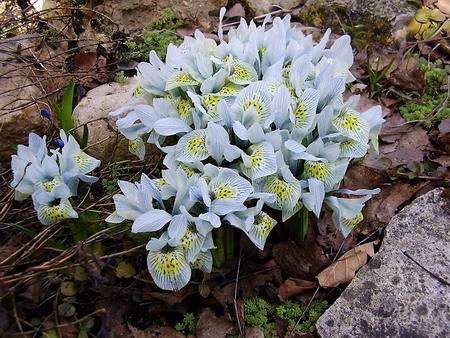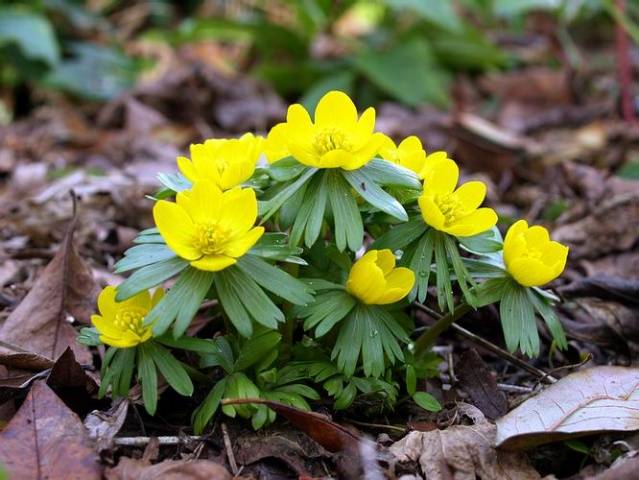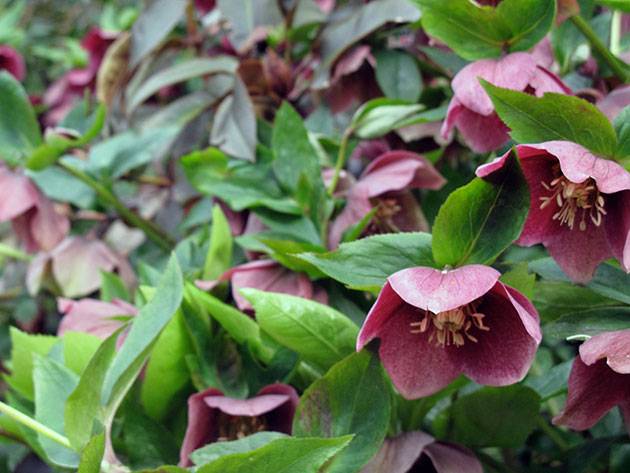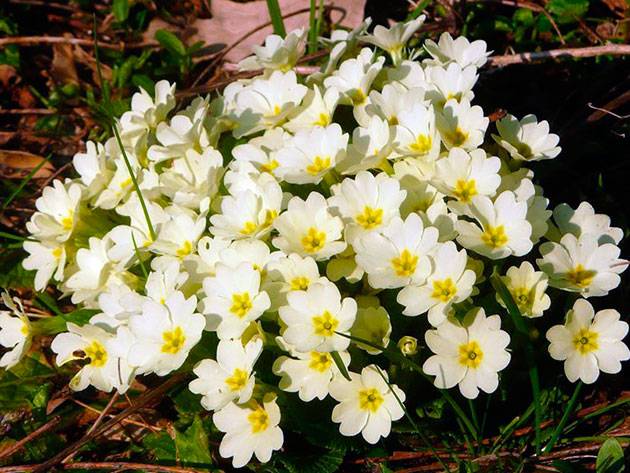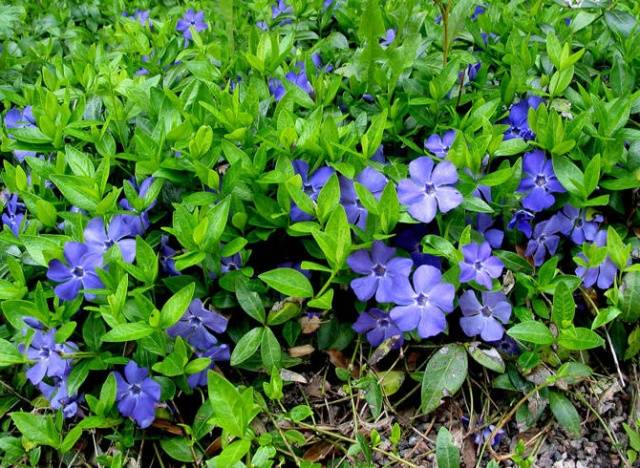Content
With the onset of spring, everyone is waiting for the first flowers to appear. Unfortunately, some of them start blooming very late, in summer or closer to autumn. Therefore, it is most pleasant to observe the flowering of the earliest garden flowers. They seem to enliven everything around, bringing bright colors into our lives. Some early flowers are perennials, which means that once you plant them, you can enjoy the beauty of the buds for many years. The most important thing is to choose the right types of flowers for yourself, which are easy to care for, and which bloom throughout the spring. This article provides information on many early flower varieties. We are sure that among them there will definitely be those who will not leave you indifferent.
Early bulbous flowers
Bulbous flowers are one of the most popular flowers in our flower beds. It is a numerous and very common species, which can boast of the earliest flowering. It is necessary to plant such plants on your site in the fall, and in the spring you can admire the beautiful flowers. Moreover, the earlier spring begins in your region, the earlier the buds will appear. Now it is worth taking a closer look at which bulbous are the earliest for our area.
Snowdrop or Galanthus
These beautiful flowers got their name because of their ability to germinate as soon as the snow begins to melt. These are the earliest flowers that delight us with their flowering from the first days of March. In some areas, they bloom later, in others earlier, but they still remain the very first spring flowers. On their plots, snowdrops need to be planted in places that resemble a forest, where they usually live. For example, you can place these flowers near bushes and trees.
If you still want to grow snowdrops in a flower bed, do not forget that they bloom for a very short time, after which they immediately wither and die off. Snowdrops are ephemeroids, which is why their growing season is very short.
In the spring, after the snowdrops have faded, the bulbs are separated, and in the fall you can start planting. These flowers grow very quickly, so from time to time they just need to be thinned out. Also, snowdrops can independently spread throughout the garden. The fact is that the ants pick up the seeds that have fallen into the soil and carry them around the site. Therefore, do not be surprised if snowdrops appear where you did not plant them.
Crocus
Not all crocuses are early flowers. The following species usually bloom the very first:
- tommasini;
- golden-flowered crocus;
- crocus impera;
- ankyr crocus.
Some of these species, depending on the climatic conditions of the region, can begin to bloom even at the end of February. A little later, Dutch large-flowered hybrids bloom. Such varieties have more lush flowers and bright colors. They look very impressive and immediately attract attention.
You can grow such flowers in any place. They feel great both in flower beds and under trees or bushes. They are often planted along curbs or on the lawn. And some people like to grow crocuses right on their balcony. These flowers grow well both outdoors and in containers.
Crocuses should also be planted in the fall.They tolerate diffused shade well, so it will not be difficult to choose a place for their planting. Both the sunny side and a place near shrubs or buildings are suitable. It is quite easy to grow these flowers, since the rhizomes do not need to be dug out every year and then buried again. This should only be done when you yourself want to share the nests.
Muscari (mouse hyacinth)
These flowers are simply mesmerizing. In addition, it is very easy to grow them, since the plant is not very picky about conditions and care. It is growing rapidly, and every year there will be more and more flowers. There are a lot of types of these colors, and not all of them are considered early. But most muscari bloom in early April.
They begin to plant these flowers in the fall, and the next year you can expect the appearance of "children". Thanks to such a rapid reproduction, these early plants can decorate the entire area in a short time. Keep in mind that by planting muscari, you can hardly get rid of them completely if you suddenly want to. Digging up small onions is difficult. Some small "kids" will still remain in the soil and germinate with the onset of spring. To avoid difficulties with plant transplantation, you should plant muscari in special baskets that you can make yourself. Then, if you want to transplant flowers to another flower bed or just dig it up, then it will be much easier to do it.
Muscari can be planted alone somewhere in the garden or near the curbs. But they look best in combination with other early colors. Therefore, they are often used for group plantings. You can also combine muscari with flowers that bloom at different times. Such a flower bed will always remain beautiful and bright.
Iris reticulated or iridodictium
Iridodictium is a separate genus that looks very much like irises in appearance. These small flowers are classified as bulbous plants. The reticulated iris grows no more than 10 cm in height. Despite such small sizes, it is simply impossible not to notice these flowers. They are very attractive and graceful.
These flowers are very fond of sunny areas. Therefore, you should not choose a place for them near trees or buildings. Iridodictiums also belong to ephemeroids, so that immediately after the end of flowering, the plants will begin to die off. The reticulated iris blooms very early, depending on climatic conditions, this period occurs at the end of March or in April. He likes light sandy soils that do not contain much moisture. Used for growing alone and in combination with other bulbous flowers. Iridodictiums look great on lawns and flower beds. Many people like to plant these flowers in containers and grow them right on their windowsill or balcony.
Some gardeners argue that immediately after the iris begins to die off, it should be dug up. Store the bulbs of these flowers in a well-ventilated dry area. They must be completely protected from direct sunlight.
Vesennik or erantis
Vesennik is one of the earliest plants in our gardens. Its golden flowers delight the eye and give a wonderful spring mood. The first buds appear in late March or early April. He is very hardy and is not afraid even of spring frosts.
Vesennik is very low (about 10 cm), and the flowers themselves can reach up to 2.5 cm in diameter. Most often, the plant is grown together with other early flowers. For example, a spring plant very well complements flower beds with snowdrops and crocuses.
Vesennik can grow anywhere. The main thing is that it is slightly shaded.The most common habitat for this plant is the forest. Therefore, flowers feel very well under trees and shrubs.
Proleska or Scylla
The most common representative of this species is Siberian redwood. It blooms by the end of March. Its bell-shaped flowers are sky blue in color. There are also varietal woodlands, which are often found in white.
These flowers are unpretentious in terms of conditions and care. They can grow both in sunny areas and in a completely shaded flower bed. The most important condition for good growth and flowering of the woodland is soil moisture. The soil should not be very dense in order to easily absorb moisture. The scrub especially needs water during the flowering period.
This flower multiplies very quickly. It grows with the help of daughter bulbs, and also propagates by seeds. Sometimes this process occurs so rapidly that it has to be controlled. It is best to grow the spit in the garden as it is a wild plant.
Early herbaceous flowers
Herbaceous perennials are far from the most common group. However, these flowers have a beautiful appearance and deserve a place in our plots.
Hellebore
These flowers are able to remain green and fresh for a long time. The hellebore has a high resistance to diseases and is unpretentious to conditions. The flowering of this plant often coincides with the period of the Easter holidays, which is why it was named "Christ's Rose".
Today, there are about 20 species of hellebore. At home, hybrid varieties are most often grown, which bloom from the beginning of April. The variety of hellebore colors is simply amazing. They can be white, red, yellow, and pink. The most popular variety has won a bright purple color. It is customary to plant hellebore in spring, although in warm regions it is possible in autumn. You can start planting this herbaceous plant immediately after the soil warms up.
Primrose
Scientists count a huge number of primrose species (no less than 550). Unfortunately, only a few of them are grown at home. You can plant primroses both from seeds and by purchasing ready-made seedlings. They are very easy to divide and replant, as these flowers easily take root in a new place. Some growers note that even flowering plants can easily tolerate a transplant.
The reason for this is the use of growth stimulants, without which flowers will no longer bloom so actively in the future.
The safest way is to buy seedlings from gardeners or ask your friends who grow primroses at home. Such flowers are more adapted to the soil without growth stimulants.
The flowering period for primroses begins in April, and in the southern regions at the end of March. A lot of flowers are formed, and towards the end of summer, primrose can bloom again. These flowers are suitable for growing in flower beds and lawns. They are often planted in containers on balconies or loggias.
Periwinkle
This plant always stays green, and even under the snow in winter, it keeps the foliage fresh. Young shoots appear immediately after the snow begins to melt. Periwinkle begins to bloom in April. The flowers of this plant are small, have a pale blue tint.
At home, I most often grow varietal periwinkle, which was bred from the wild "Small Periwinkle". Such varieties can have not only the usual blue color for us, but also white, red or lilac. There are even plants with double flowers. Foliage may also vary.Traditional varieties have green leaves, but variegated colors with white and yellow patterns can also be seen among the hybrids.
These flowers love moderately moist soil and slightly shaded areas. It is not advisable for the periwinkle to be exposed to direct sunlight. In principle, these are all the basic rules for growing periwinkle. The plant quickly spreads over the site. For propagation, you can use both cuttings and divided roots. By purchasing only one periwinkle seedling, you will soon receive a whole flower garden from this beautiful plant.
Conclusion
This list can be continued indefinitely. Of course, it is impossible to list all the early garden flowers in one article. In addition, there are a huge number of varieties of early tulips and hyacinths, as well as other equally beautiful flowers. Unfortunately, it is impossible to plant all types of flowers known to us on our site. We have to be content with only some of our favorite varieties. Someone prefers crocuses and irises, someone is crazy about snowdrops, while others cannot imagine their life without tulips. In any case, flowers fill our life with colors and give a feeling of joy.
